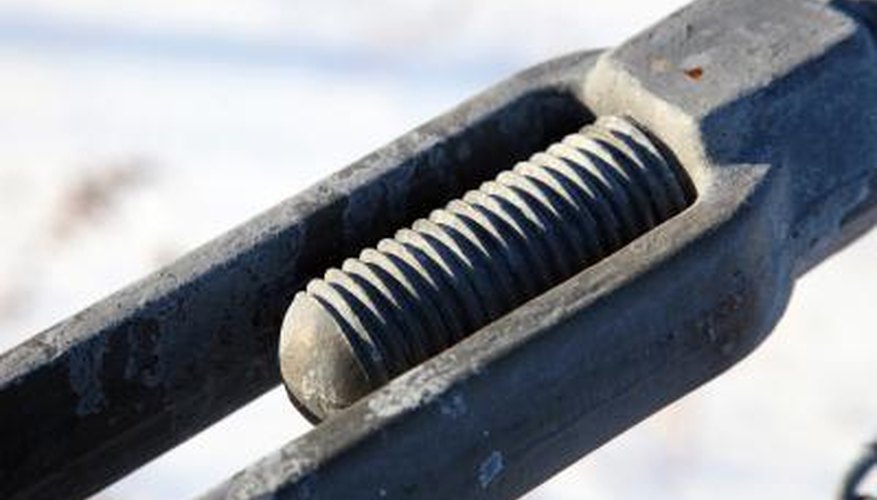Turnbuckles are fittings used to tighten or loosen the tension on guy wires to move, level or secure the object connected to the guy wire. The fitting consists of two threaded rods that terminate in eyes, hooks or jaws. When preparing to secure a structure using a turnbuckle its is important to know how to correctly size the turnbuckles. Sizing a turnbuckle means to select the turnbuckle that can support the appropriate load weight to hold the tension required on the guy wire and the end type that will fit the size wire required by the load.
Make sure the turnbuckle is completely closed by turning the centre frame (the take-up) that the two threaded rods are fitted through in a clockwise direction until the ends of the threaded rods touch.
Measure the diameter of the threaded rod with a caliper ruler. Close the calipers on the threaded rod just above the first thread near the eye, hook or jaw. Make sure the calipers are not on the thread itself or too far up from the thread that the calipers are measuring where the rod begins to flare into the end eye, hook or jaw. Note this measurement and label it 'A.'
- Turnbuckles are fittings used to tighten or loosen the tension on guy wires to move, level or secure the object connected to the guy wire.
- Make sure the calipers are not on the thread itself or too far up from the thread that the calipers are measuring where the rod begins to flare into the end eye, hook or jaw.
Use a straight ruler to measure the length of the inside of the take-up. The take-up is what is turned to loosen or tighten the turnbuckle. The inside of the take-up is the rectangle inside the frame through which the threaded rods can be seen. Measure end to end of the inside of the frame. Note the measurement and label it "BB."
Locate the listing on a turnbuckle load chart that matches the measurements for A (the threaded diameter) and BB (the take-up). Note the load capacity of that turnbuckle size. Each turnbuckle size is unique to a load capacity, there will not be duplicate threaded diameter and take-up measurements for different load capacities.
- Use a straight ruler to measure the length of the inside of the take-up.
- Locate the listing on a turnbuckle load chart that matches the measurements for A (the threaded diameter) and BB (the take-up).
Use a caliper ruler to measure the widest part of the inside of the eye. Note this measurement and label it "S." For hook ends, use a caliper ruler to measure the inside width of the opening in the hook and label it "D." For a jaw end, use a caliper ruler to measure the width of the inside opening of the jaw and label it 'B.'
Convert the measurement from standard to decimal using a conversion calculator. Find the measurement that matches the end measurement on a turnbuckle size chart to know the load capacity. Turnbuckle charts are standardised. The label given the measurement (S, D, B) will have a corresponding column on all charts.
- Use a caliper ruler to measure the widest part of the inside of the eye.
- Note this measurement and label it "S." For hook ends, use a caliper ruler to measure the inside width of the opening in the hook and label it "D." For a jaw end, use a caliper ruler to measure the width of the inside opening of the jaw and label it 'B.'
- Convert the measurement from standard to decimal using a conversion calculator.
Measure the diameter of the guy wire to be used or the diameter of the bolt on the Crosby or u-clamp to be used to connect to the wire to the hook or jaw, to make sure that the wire will fit the end on the turnbuckle.
TIP
Select the next largest load capacity if either the 'A' and 'BB' load capacities or the end load capacity is less than what is needed.
WARNING
The wrong sized turnbuckle can cause the guy wire to fail by being unable to support the load, releasing the support tension in the wire. This will cause the object supported to fall, which can cause serious damage and injury.
